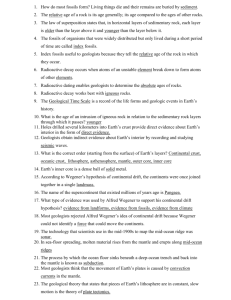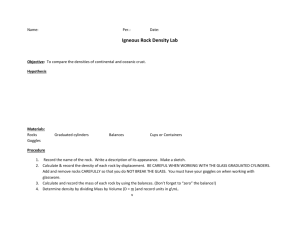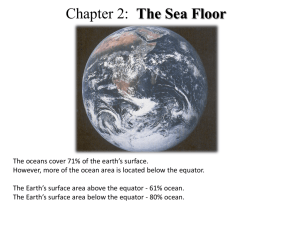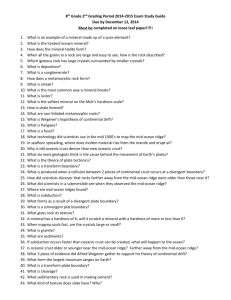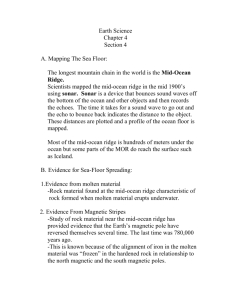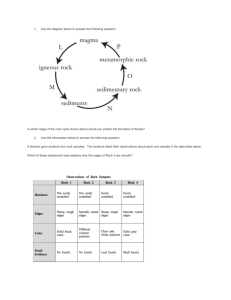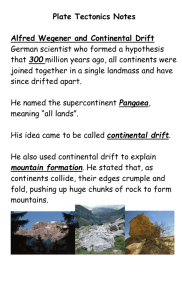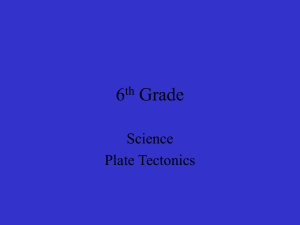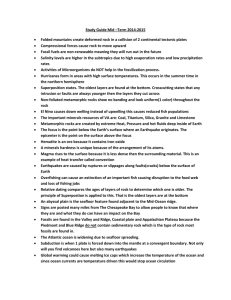3rd Grading Period 8th Grade Earth Science Study Guide Chapter 5
advertisement
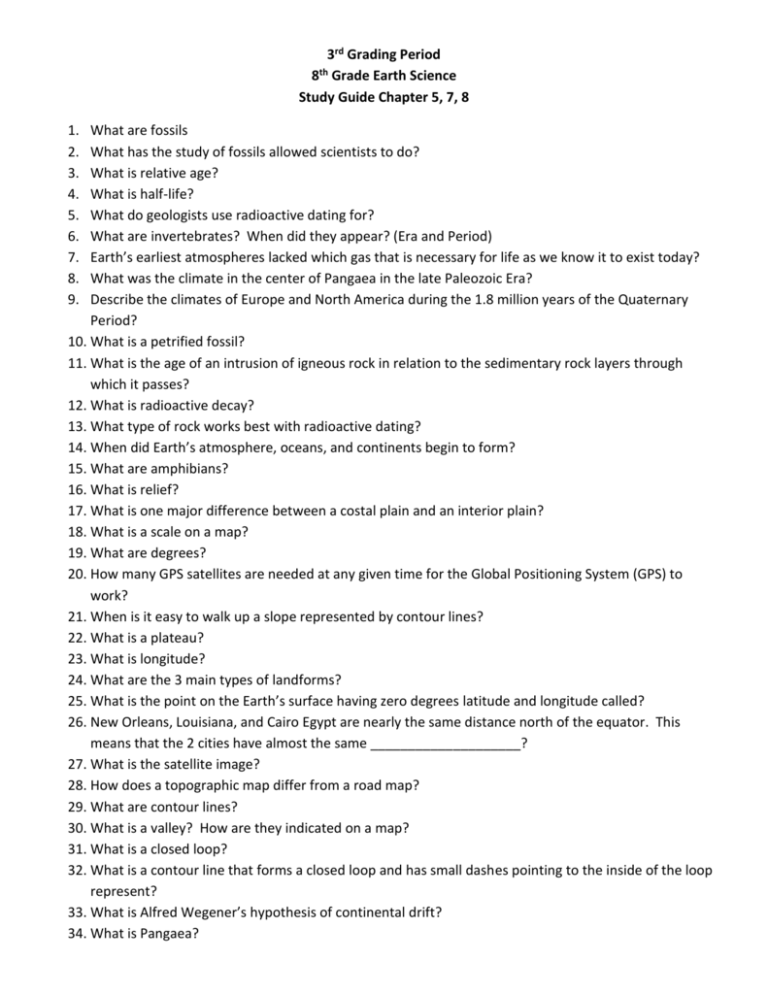
3rd Grading Period 8th Grade Earth Science Study Guide Chapter 5, 7, 8 1. 2. 3. 4. 5. 6. 7. 8. 9. What are fossils What has the study of fossils allowed scientists to do? What is relative age? What is half-life? What do geologists use radioactive dating for? What are invertebrates? When did they appear? (Era and Period) Earth’s earliest atmospheres lacked which gas that is necessary for life as we know it to exist today? What was the climate in the center of Pangaea in the late Paleozoic Era? Describe the climates of Europe and North America during the 1.8 million years of the Quaternary Period? 10. What is a petrified fossil? 11. What is the age of an intrusion of igneous rock in relation to the sedimentary rock layers through which it passes? 12. What is radioactive decay? 13. What type of rock works best with radioactive dating? 14. When did Earth’s atmosphere, oceans, and continents begin to form? 15. What are amphibians? 16. What is relief? 17. What is one major difference between a costal plain and an interior plain? 18. What is a scale on a map? 19. What are degrees? 20. How many GPS satellites are needed at any given time for the Global Positioning System (GPS) to work? 21. When is it easy to walk up a slope represented by contour lines? 22. What is a plateau? 23. What is longitude? 24. What are the 3 main types of landforms? 25. What is the point on the Earth’s surface having zero degrees latitude and longitude called? 26. New Orleans, Louisiana, and Cairo Egypt are nearly the same distance north of the equator. This means that the 2 cities have almost the same ____________________? 27. What is the satellite image? 28. How does a topographic map differ from a road map? 29. What are contour lines? 30. What is a valley? How are they indicated on a map? 31. What is a closed loop? 32. What is a contour line that forms a closed loop and has small dashes pointing to the inside of the loop represent? 33. What is Alfred Wegener’s hypothesis of continental drift? 34. What is Pangaea? 35. What is a fossil? 36. What technology did scientists use in the mid 1900’s to map the mid-ocean ridge? 37. In seafloor spreading, where do molten materials rise from the mantle and erupt? 38. Why is old oceanic crust denser than new oceanic crust? 39. What do most geologists think that the movement of Earth’s plates is caused by? 40. What is the theory of plate tectonics? 41. What is a transform boundary? 42. What is formed when two pieces of continental crust collide at a convergent boundary? 43. How did scientists discover that rocks farther away from the mid-oceans ridge were older than those near it? 44. What did scientists in a submersible see when they observed the mid-ocean ridge? 45. Where are mid-ocean ridges found? 46. What is subduction? 47. Where does a rift valley form? 48. What is a convergent boundary? 49. Where are the youngest layers of rock found? 50. What are 2 examples of trace fossils? 51. What did geologists divide Earth’s long history into? 52. What type of rocks do you find fossils in? 53. What does the law of superposition help geologists determine about a rock layer? 54. What does a map key show on a map? 55. What is the prime meridian? 56. What is a mountain range? 57. How is the topography of an area determined? 58. If subduction occurs faster than oceanic crust can be created, what will happen to the oceans? 59. Near the mid-ocean ridge, is oceanic crust younger or older? 60. What is continental drift? Who hypothesized continental drift? 61. What is a divergent boundary? SHORT ANSWER 62. Using a graph, determine the amount of time it will take for the Strontium 90 to decay. 63. Using a graph, what is the half-life of Strontium 90? Explain you answer. 64. Using a graph, how long will it take until only 25% of the Strontium 90 remain? 65. Using a world map, what does the grid of a vertical and horizontal lines on the map represent? 66. Using a world map, which type of map projection is shown? 67. Using a world map, a ship is at point C on the map. What is the exact position of the ship? ESSAY 68. Describe a scientific hypothesis to explain the mass extinction of dinosaurs and many other organisms at the end of the Cretaceous Period. 69. Define the geologic time scale and explain why geologists use it to show Earth’s history. 70. According to the theory of plate tectonics, explain what cause changes Earth’s surface.

